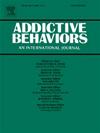A randomized controlled trial evaluation of a smoking cessation and physical activity intervention delivered via telemedicine in the Norton Sound region of Alaska
IF 3.7
2区 医学
Q1 PSYCHOLOGY, CLINICAL
引用次数: 0
Abstract
Objectives
Tobacco use disproportionately affects Alaska Native people. Physical activity may aid quitting smoking and provides health benefits. We tested telemedicine-delivered heart health interventions in Alaska’s Norton Sound region.
Methods
Alaska Native adults (N = 299, 51.5 % male, 60.5 % Inupiaq) with hypertension and/or hypercholesterolemia who smoked daily were randomized to intervention on smoking and physical activity (group 1) or traditional diet and medication adherence (group 2). Intention to change was not required for participation. Stage-tailored mailed workbooks and personalized reports were supported by telehealth counseling at baseline, 3, 6, and 12 months. Study outcomes were assessed at baseline, 3-, 6-, 12-, and 18-months (i.e., 6-months after the final counseling session). Smoking outcomes were self-reported 7-day point prevalence abstinence (7d-PPA),1 bioconfirmed with urine anabasine; 24-hour quit attempts; and 50 % reduction in smoking. Self-reported physical activity outcomes were metabolic equivalent of task (MET) minutes and meeting moderate-to-vigorous physical activity (MVPA) guidelines.
Results
At baseline, participants averaged 12.4 (SD = 10.0) cigarettes/day, with 19.4 % prepared to quit smoking, and 81.6 % meeting MVPA guidelines. During the study, most (70.2 % group 1; 63.5 % group 2) reported a 24-hr quit attempt (p = 0.219), and Group 1 (53.6 %) was more likely than Group 2 (28.4 %) to use nicotine replacement therapy (NRT), OR = 2.92, p < 0.001. At 18-months, 40.5 % (group 1) and 32.5 % (group 2) had reduced their smoking by half or more (p = 0.343), and 10.8 % vs. 7.9 % (group 1 vs. 2) reported 7d-PPA with 4 % vs. 6 % (group 1 vs. 2) bioconfirmed. Time and baseline stage of change predicted 7d-PPA (p’s≤.015), with no group effect (p = 0.325). Activity levels did not significantly differ by group or time.
Conclusions
Telemedicine counseling supported NRT use but did not significantly affect behavioral outcomes.
在阿拉斯加诺顿湾地区通过远程医疗提供戒烟和体育锻炼干预的随机对照试验评估。
目标:吸烟对阿拉斯加原住民的影响尤为严重。体育锻炼有助于戒烟并对健康有益。我们在阿拉斯加诺顿湾地区对远程医疗提供的心脏健康干预措施进行了测试:阿拉斯加原住民(N = 299,51.5% 为男性,60.5% 为伊努皮亚克人)中每天吸烟的高血压和/或高胆固醇血症患者被随机分为吸烟和体育锻炼干预组(第 1 组)或传统饮食和坚持服药干预组(第 2 组)。参加者无需有改变的意愿。在基线期、3 个月、6 个月和 12 个月时,通过远程医疗咨询提供分阶段定制的邮寄工作手册和个性化报告。研究结果在基线、3 个月、6 个月、12 个月和 18 个月(即最后一次咨询后 6 个月)进行评估。吸烟结果为自我报告的 7 天点戒烟率 (7d-PPA),1 通过尿液阿那巴辛进行生物确认;24 小时戒烟尝试;以及吸烟量减少 50%。自我报告的体力活动结果是代谢当量任务(MET)分钟数和达到中到剧烈体力活动(MVPA)指南的要求:基线时,参与者平均每天吸烟 12.4 支(SD = 10.0),19.4% 的人准备戒烟,81.6% 的人符合 MVPA 指导原则。在研究过程中,大多数参与者(第一组 70.2%;第二组 63.5%)都曾尝试过 24 小时戒烟(P = 0.219),第一组(53.6%)比第二组(28.4%)更有可能使用尼古丁替代疗法(NRT),OR = 2.92,P 结论:远程医疗咨询支持尼古丁替代疗法的使用,但对行为结果没有显著影响。
本文章由计算机程序翻译,如有差异,请以英文原文为准。
求助全文
约1分钟内获得全文
求助全文
来源期刊

Addictive behaviors
医学-药物滥用
CiteScore
8.40
自引率
4.50%
发文量
283
审稿时长
46 days
期刊介绍:
Addictive Behaviors is an international peer-reviewed journal publishing high quality human research on addictive behaviors and disorders since 1975. The journal accepts submissions of full-length papers and short communications on substance-related addictions such as the abuse of alcohol, drugs and nicotine, and behavioral addictions involving gambling and technology. We primarily publish behavioral and psychosocial research but our articles span the fields of psychology, sociology, psychiatry, epidemiology, social policy, medicine, pharmacology and neuroscience. While theoretical orientations are diverse, the emphasis of the journal is primarily empirical. That is, sound experimental design combined with valid, reliable assessment and evaluation procedures are a requisite for acceptance. However, innovative and empirically oriented case studies that might encourage new lines of inquiry are accepted as well. Studies that clearly contribute to current knowledge of etiology, prevention, social policy or treatment are given priority. Scholarly commentaries on topical issues, systematic reviews, and mini reviews are encouraged. We especially welcome multimedia papers that incorporate video or audio components to better display methodology or findings.
Studies can also be submitted to Addictive Behaviors? companion title, the open access journal Addictive Behaviors Reports, which has a particular interest in ''non-traditional'', innovative and empirically-oriented research such as negative/null data papers, replication studies, case reports on novel treatments, and cross-cultural research.
 求助内容:
求助内容: 应助结果提醒方式:
应助结果提醒方式:


